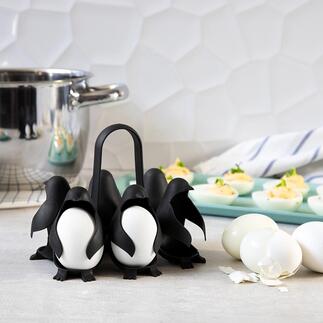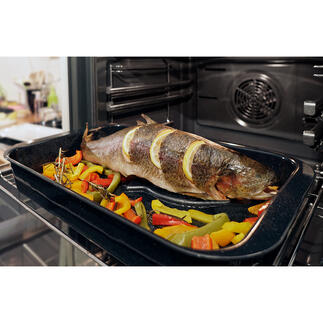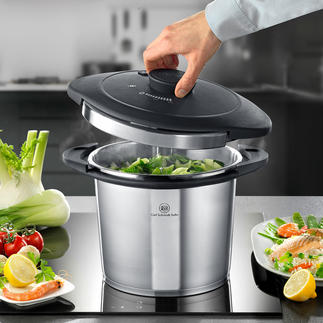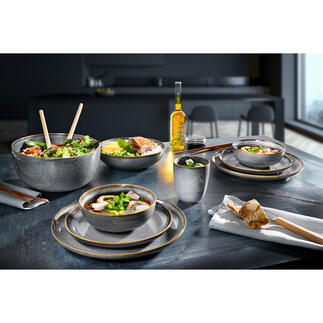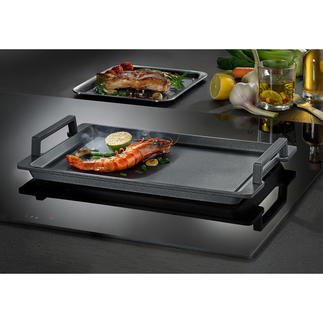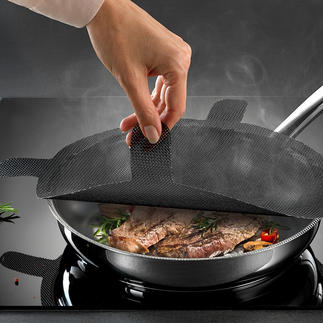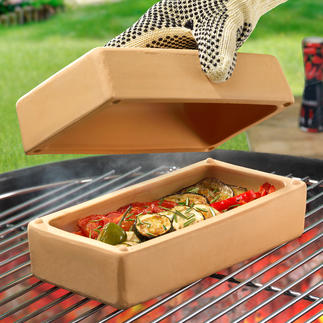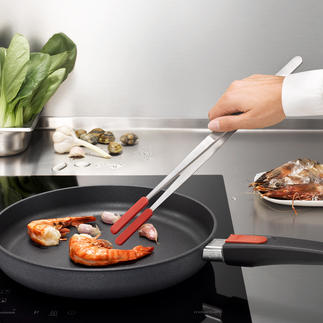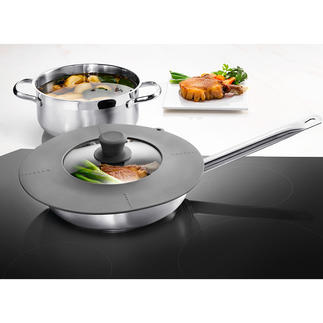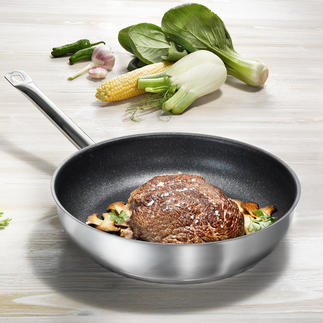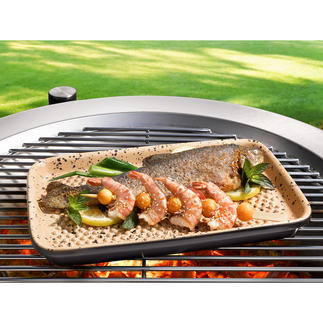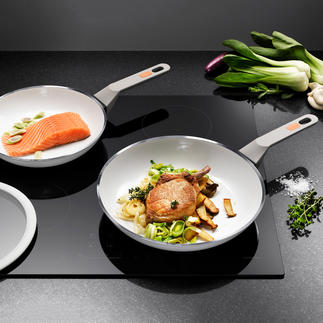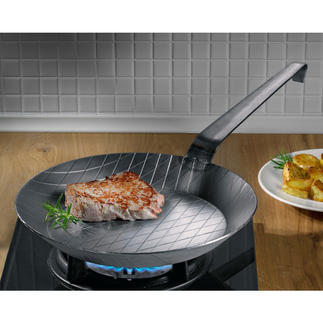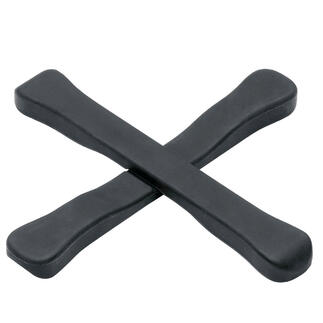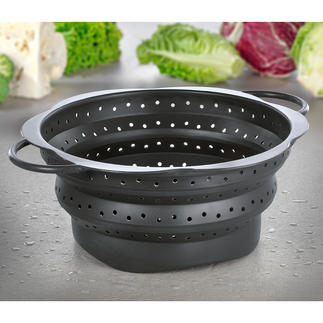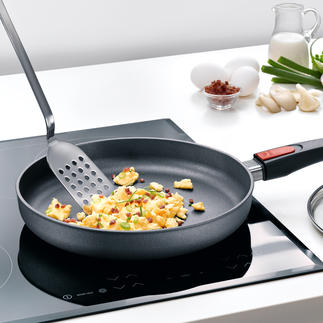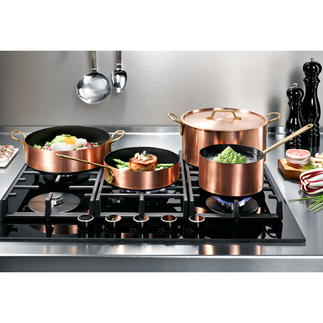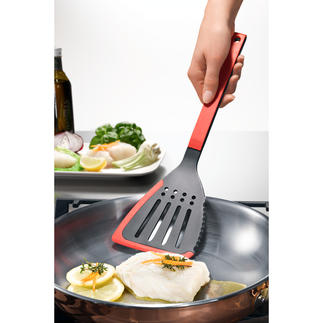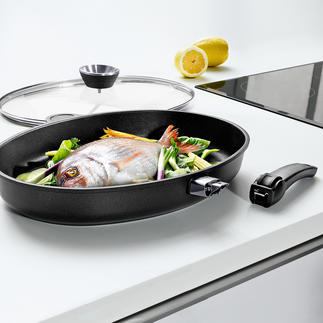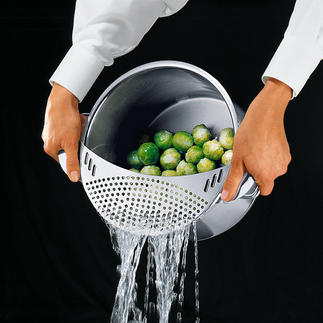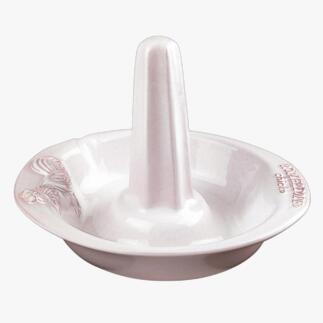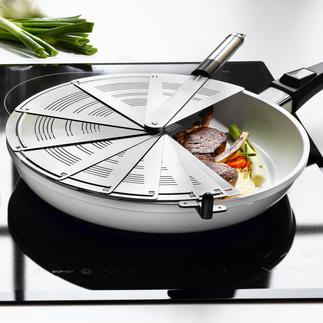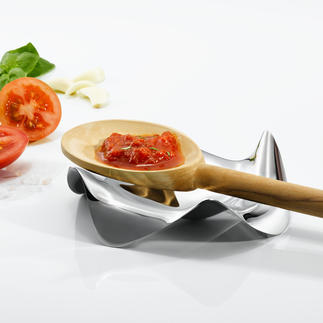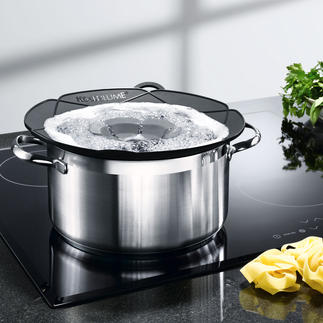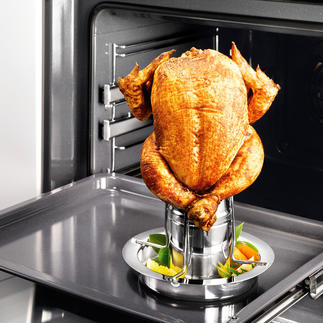
Goodbye
As a result of the Brexit, Pro-Idee has closed its UK online shop and stopped deliveries from the Continent to the United Kingdom.
You have shopped with us in the past and your Pro-Idee product has developed a fault within its guarantee period? No worries, we’re still here for you. Please simply contact us by mail to export@proidee.de. We’ll be happy to find a solution for you.
If you wish to have your order delivered to an address outside the UK, we invite you to continue shopping in our German, French, Dutch, Austrian or Swiss online shop.
We thank you much for the continuous support throughout the years.
Pots, pans & accessories - Pro-Idee Cuisine
Good frying pans: What really matters.
Fried dishes are scrumptiously crisp, deliciously brown and tempt with their aromas. There are two not entirely understood chemical processes responsible for this - the caramelisation and the Maillard reaction. Both require high temperatures during cooking, which cannot be achieved by boiling.
Characteristics of frying pans are:
- the base material used;
- the coating;
- the shape and
- the intended use.
A good frying pan distinguishes itself by a perfectly coordinated combination of these characteristics. Read more
The base material
When cold foods are added to a hot pan, the frying fat cools down temporarily. Water leaks out, meat and fish become tough and dry. A good pan stores a lot of heat. It therefore retains a consistent temperature when adding food. Meat and fish get crispy and stay succulent.
Pans are not heated evenly on gas or ceramic hobs. In pans of poor quality, meat and fish are fried unevenly and stick on hotter spots. A good pan distributes the heat from the hob quickly and evenly. This prevents burning, and everything is cooked evenly.
The ability of a pan to store heat from the hob and to pass it on to the food is primarily determined by the base material used.
Aluminium
Aluminium is very light, conducts heat well, but stores it only for a short time. Aluminium reacts with some foods, and therefore aluminium pans need to be coated. A good aluminium pan has a thick base that also contains ferromagnetic layers. Such a base distributes heat better.
Stainless steel
Stainless steel is non-corrosive and food-safe. It stores heat better than aluminium, but conducts it more slowly. A good stainless steel pan has a sandwich or copper bottom in order to improve conductivity.
Stainless steel may contain small amounts of nickel. Nickel allergy sufferers should therefore only use coated stainless steel pans.
Cast and wrought iron
Iron conducts heat four times better than stainless steel. Due to its heavy weight, it stores heat very well. Thus, browning turns out better, and when serving at the table, the contents of the pan remain hot for longer. Wrought iron is stronger than cast iron due to its lower carbon content. Therefore, wrought iron pans are normally lighter, but also have a lesser ability to store heat.
With continuous usage and proper care, a patina will develop in the pan, which replaces a coating and protects the iron from corrosion. Kitchen experts favour iron pans. You can identify a good iron pan by its heaviness which, depending on its size, can reach 4kg (9lbs).
Copper
Except for silver, copper has the best heat conductivity of all metals. Being light in weight, it allows a quick and even heat distribution in a pan. Copper takes on different hues when heated. With time, a patina develops. Copper is a very soft metal and susceptible to small scratches. Traditionally, copper cookware is cleaned with lemon juice and salt.
A good copper pan is coated on the inside with tin or stainless steel, because copper reacts with certain foods.
Bacteria cannot survive on copper. That is the reason why the pipes for the supply of drinking water are made from copper, and door and window handles are often made of brass (80% copper).
Induction-compatibility
Not every base material is suitable for every type of hob. Aluminium or copper pans function only on a gas or ceramic hob. Some copper pans have a ferromagnetic coating that makes them induction-compatible. A special sandwich bottom also makes them induction-compatible. You can use most stainless steel or iron pans on all types of hobs.
The coating
A good coating prevents dishes from sticking while frying.
PTFE coatings such as Teflon™, Autograph 2™, Circulon™ or Swiss Diamond™ reliably prevent sticking. They can handle temperatures up to 260°C, although these can easily be exceeded when heating up or flambéing. PTFE also scratches easily. PTFE-coated pans last longer when washed by hand. Good PTFE coatings are made without perfluorooctanoic acid which is harmful to the environment and health.
Enamel coatings are less sensitive than PTFE coatings. Hence, they retain their non-stick properties a bit longer. Enamel can take high temperatures, and is therefore suitable for searing. However, enamel is shock-sensitive and so may chip off.
Coatings made from aluminium, titanium or silicon ceramics are clearly more scratch-resistant. They can easily survive the dishwasher. Ceramic coatings are suited to temperatures up to 400°C, but lose their non-stick effect more quickly than PTFE coatings.
Pans with damaged coatings do not just look unappealing: For the sake of your health, you should no longer use them.
Cast and wrought iron pans are not coated. Excellent flavours are allowed to develop which leads to an unrivalled taste of your dishes. They are absolutely insensitive to high temperatures and scratches. A good iron pan can last several decades. You can achieve the non-stick effect here with a more generous use of frying fat.
The shape
Shape follows function. That is also the case with frying pans. There are oval pans for fish, pans with especially flat borders for crepes, deep pans for stewing, pans with grooved bottoms for grilling, woks for Asian cooking, decorative pans to serve extravagant dishes and many others.
The handle
The heavier the pan, the more important it is to have a durable and sturdy connection between pan and handle. Simple plastic handles will warp due to the heat and start wiggling sooner or later. On the other hand, good wooden handles stay stable and don’t lose their shape over time.
Manufacturing a pan and handle out of one piece is laborious, but looks best. Welded handles last just as well, but are clearly cheaper. Pans of low quality have riveted handles, and often trap unsightly food leftovers on the rivet heads on the inside of the pan.
A good handle is durable, and protects you against burnt fingers when handling your pan. A removable handle is practical if you cook dishes au gratin in the oven, if you want to keep dishes warm or if you want to stow the pan and save space.
The right one for every purpose
Delicate dishes such as fish, crepes or fried eggs are best cooked in an aluminium pan with a PTFE coating. Their low weight facilitates handling and the turning of crepes, even without a spatula. If you want to cook with limited added fat, you are also best served with a coated pan.
Ceramic-coated pans made from stainless steel are the same kind of all-rounders as aluminium pans. Dishes that require gentle heat can be prepared in them just as well as fish or vegetables roasted at high temperatures.
Seared steaks and scrumptiously brown fried potatoes are best prepared in a cast iron pan: Taste and texture of the foods are optimised. The successful cooking of delicate foods (such as fish or egg dishes) in a cast iron pan requires a lot of experience.
A copper pan is just as decorative in your kitchen as it is to serve at the table. Its good heat conductivity makes it perfect for gas hobs and for delicate dishes. It is indispensable in French cuisine. If it is coated with stainless steel, you can also flambé effectively in it.
The perfect pan
So, there is no such thing as a totally universal pan. At Pro-Idee, you will find the right pan for every purpose so you can prepare your dishes beautifully:
- If you are looking for an all-round pan to start with, a ceramic-coated pan such as our Premium pan by Schulte-Ufer is just right for you.
- If you want to prepare delicate foods such as fish or eggs a lot, PFTE coated pans such as our Anolon or Diamond Lite pans by Norbert Woll are the best choice.
- Seared steak lovers are best served with an easy-to-clean enamel coated cast iron pan.
- Anyone who likes to entertain guests in style and already owns the right pans for their favourite dishes, should consider our ceramic-coated copper pan from our induction-compatible copper cookware series.
- If you are a fan of preparing unusual dishes, then you will be able to find just the right special pan in our online shop.



